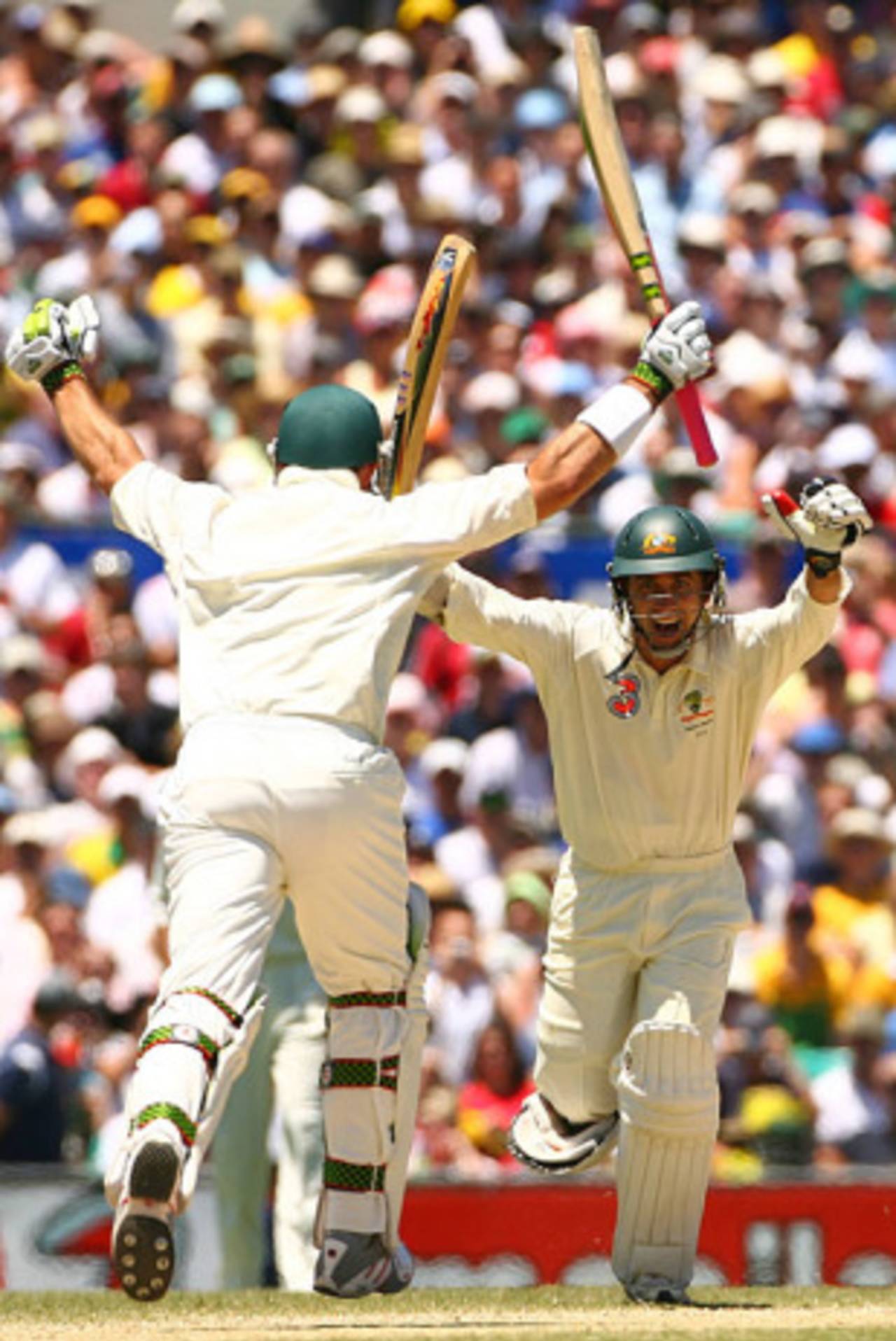On the other hand
Left-handers are increasingly to the fore in cricket. What would an all-time XI composed exclusively of the species look like?
Mike Selvey
24-Oct-2010

Hayden and Langer: package deal • Getty Images
The rise of the left-hander has been relentless in the past decade or so. Once regarded as anomalous - fantasy sides of my youth ideally had a left-right opening combination, perhaps a cack-hander in the middle-order player and a left-arm slowie for balance, but that was it - they are now mainstream. Why should this be?
Perhaps, as a start, we should understand the semantic difference between being left-handed and being a left-hander. In cricket terms, the former is rarer, and for obvious reasons is the domain, almost exclusively of the left-arm bowler (although David Gower, I believe, writes left-handed but bowled, if you can call it that, right-handed). Of the five bowlers in my XI, four batted left-handed, and with the fifth it probably wouldn't have made any difference if he had as well. By contrast, six of the top seven batsmen are listed as being right-arm bowlers.
There is a reason and a logic to this. Batting at its best ought to be a top-hand-dominant game and each of these players conforms to that, none more so than Adam Gilchrist, whose right hand could scarcely get higher up the handle. With dominant eye playing its part, batting left-handed is actually the logical way to bat. At one time, I suppose, it was discouraged as not conforming to coaching stereotypes, in much the same way that left-handed children were said to have had their hands strapped in Victorian schools as discouragement. That attitude has disappeared now of course. And the more left-handers there are, the more there will be, as aspiring players seek to emulate their heroes.
In fact, with the rise also of left-arm bowlers, the game is becoming a mirror image of itself. There seem to be more pacemen now, who in particular have become an important part of limited-overs strategy. They are encouraged, too, in the past few years by the use of technology and the willingness of umpires to give slow bowlers lbw decisions where once they were declined (try a comparison between those gained by Monty Panesar, say, and Dan Vettori at equivalent stages of their careers).
How many lefties make the all-time World XI is a different matter. But they are on the march.
1 and 2. Matthew Hayden and Justin Langer Have to come as a pair. Batman and Robin, Bluebeard the Pirate and his parrot. Only Haynes and Greenidge were more prolific together.
3. Graeme Pollock. Average of 60.97, second to Bradman of those with at least 20 Test innings, is pretty special.
4. Brian Lara At his best, surpasses anyone in the modern era. Insatiable appetite for runs, incredible flair, imagination and spacial awareness.
5. Clive Lloyd (capt) Destructive as a batsman, a uniter of nations as captain.
6. Garry Sobers Best allrounder in the game's history.
7. Adam Gilchrist Incomparable wicketkeeper-batsman.
8. Wasim Akram Genius, the best left-arm paceman of them all. Could make the ball recite Shakespeare if necessary.
9. Alan Davidson Swing and cut brought him 186 Test wickets @20.53 for goodness sake. Phenomenal.
10. Bishan Bedi Should it be Bishan luring his prey like a competition angler? Or deadly Derek Underwood, indefatigable Dan Vettori, or silky Hedley Verity? By a whisker, if only for aesthetics, the man who hypnotised batsmen like a snake charmer did a cobra.
11. Johnny Wardle To bowl only the chinamen and googlies he purveyed like no other.
Former England and Middlesex bowler Mike Selvey is cricket correspondent of the Guardian